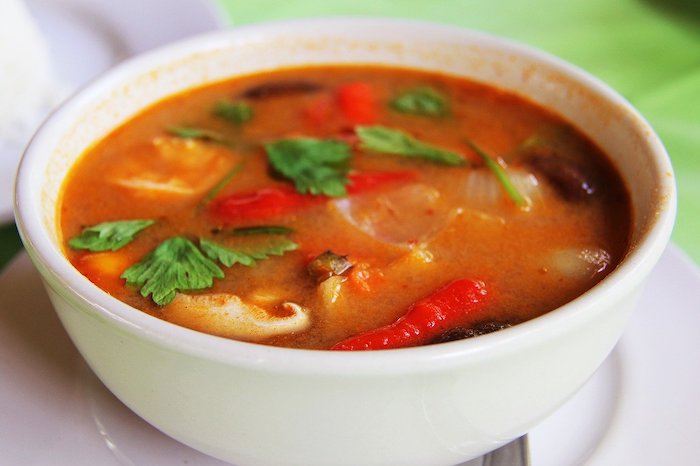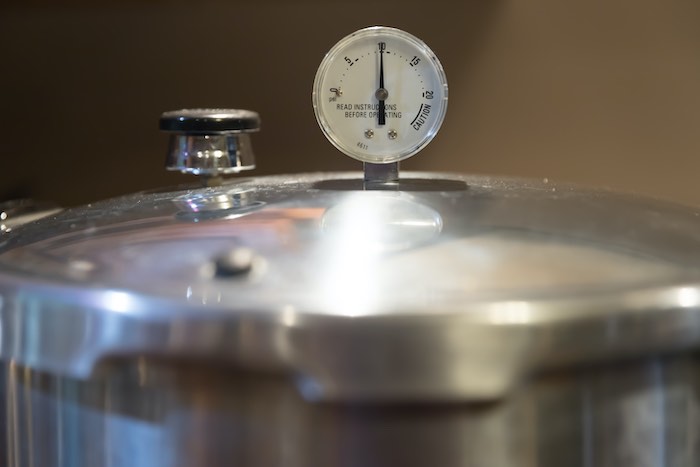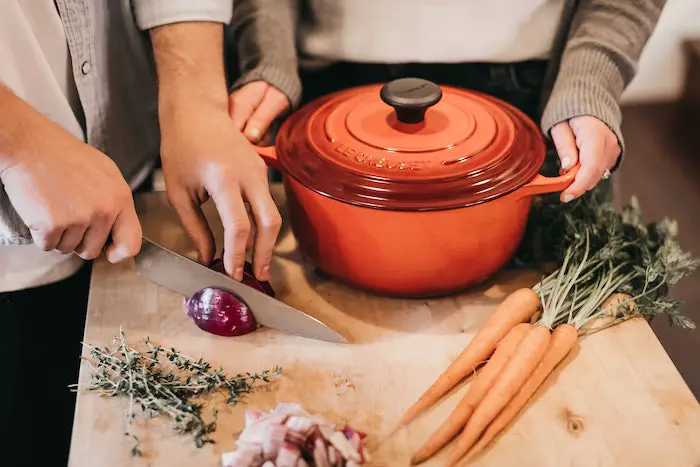10 Ways to Make Thai Food Spicy
Thai food is notoriously spicy. It contains a host of dishes, sauces, soups, salads, and curries that will sock you right in the taste buds. If you’re attempting Thai cuisine at home though, you may wonder how you can make Thai food spicy—or even spicier than it already is, depending on your preferences.

The best way to make Thai food spicy is by using chilies often associated with the cuisine. These include Bird’s Eye, Mouse Dropping, Thai Banana, and Green Flavor, among several others. However, you can also use Thai chili paste or seasoning mix as well as peppercorns.
It’s imperative that you understand how hot these are before including them in your recipe, though. What makes understanding all of this quite a bit easier is the use of the Scoville scale. This scale is a unit of measurement that tells you how much capsaicin (the spicy constituent in chili) is in particular peppers. The higher the rating, the more heat it will have.
Overview of Ways to Make Thai Food Spicy
- Bird’s Eye Chili Peppers/Thai Chili (Prik Khi Nu)
- Green Flavor (Prik Jinda)
- Pointing at the Sky Chili (Prik Chi Faa)
- Mouse Dropping Chili (Prik Kee Noo Suan)
- The Spiciest Chili (Prik Kaleang)
- Oily Chili (Prik Mun)
- Thai Banana Peppers (Prik Noom)
- Orange Chile (Prik Leung)
- Thai Chile Pastes & Seasoning Mixes
- Peppercorns
1. Bird’s Eye Chili Peppers/Thai Chili (Prik Khi Nu)

Prik Khi Nu, also called Bird’s Eye Chili Pepper, is one of the most common chilies used in various Thai dishes. It’s small but packs quite a bit of heat, measuring between 50,000 to 100,000 on the Scoville scale. This means it sits at the milder end of a Habanero chili.
Experienced chili pepper lovers say it has a medium heat, but if you’re new to the world of spicy Thai foods, it will blow your mouth away.
2. Green Flavor (Prik Jinda)
A little milder than the Bird’s Eye, Green Flavor peppers—called Prik Jinda—are very long, skinny peppers commonly used in Thai dishes. Despite their name, these peppers are very often red in color, although they do still come in green as well. These peppers provide a fresh, grassy taste to dishes, hence their name.
Green Flavor chilies have a Scoville rating of 75,000. This means that anyone uninitiated to the world of Thai food will find that these have some kick to them.
3. Pointing at the Sky (Prik Chi Faa)

For a true mild that most people from the West can reasonably handle, Prik Chi Faa (literally translating to “Pointing at the Sky”) is ideal. This chili gets its name from how it grows, and it has a Scoville rating of 5,000 to 30,000.
People will often dry, deseed, and soften them in water before use. This is followed with pounding to fully prepare these peppers to be put into a number of dry mixes and chili pastes. Prik Chi Faa is a main ingredient in red curries, and it may also be used as a garnish.
4. Mouse Dropping Chili (Prik Kee Noo Suan)
Another common chili in Thai cuisine is Prik Kee Noo Suan, or Mouse Dropping Chili. While there’s some confusion over whether this is just another name for a Bird’s Eye Chili, there do seem to be distinctions between the two that warrant mentioning it as an entirely separate pepper.
The Mouse Dropping Chili is a tiny green chili and is one of the top ten spiciest varieties available, having a Scoville rating between 80,000 and 100,000. Prik Kee Noo Suan is prevalent in many dishes such as salads, tom yum soup, and green curry.
5. The Spiciest Chili (Prik Kaleang)
For a serious hot and spicy punch in the mouth, Prik Kaleang is king. It’s the spiciest chili you can find in Thailand, coming in at a rating of 50,000 to 100,000 on the Scoville scale. The kind of heat output this particular pepper gives sneaks up on you and builds up with each bite.
Prik Kaleang is a popular chili in northern Thailand and is used mostly for curries. It also comes in a range of colors that include light yellow-green, red, yellow, and orange.
6. Oily Chili (Prik Mun)
Prik Mun, translating to “Oily Chili,” is ideal for pickling, and it is often served as a condiment, either fresh or in vinegar. These sit between 20,000 and 50,000 on the Scoville scale. They are dark green and red in color; and as the name suggests, they’re highly oily on their skin’s surface, but the taste has a sweetness with a serious kick.
7. Thai Banana Peppers (Prik Noom)

For those less adventurous with hot and spicy foods, Prik Noom is the Thai version of a Banana Pepper. This pepper is delightfully mild, only sitting at 500 to 600 on the Scoville scale. They have a long and narrow appearance with bumpy, shiny skin and a light green color.
These Thai Banana Peppers are sweet and tangy with a distinct spiciness that won’t burn or overpower. People often use this pepper to bring color to a dish or as a topping for stews, soups, and salads. It’s also the star ingredient in Nam Prik Noom, a delectable green chili dip. It’s possible to eat these raw or pickled as well.
8. Orange Chili (Prik Leung)
Orange Chilies, called Prik Leung, are long, slender, golden orange-yellow peppers with thick bodies. These are quite mild in comparison to other chilies mentioned so far. Depending on the variety, they commonly sit between 30,000 and 100,000 on the Scoville scale. These primarily go into chutneys, soups, salads, fried rice, stir-fry, dips, and sauces.
9. Thai Chili Pastes & Seasoning Mixes
There are a number of chili pastes and seasoning mixes available to purchase either online or at a physical store. Your local grocery store should have a small selection of these, too. However, for a more authentic experience, we recommend that you go to an Asian food market.
All you’ll need to do is simply add a tablespoon or two before or after cooking your Thai dish to give it a punch of heat.
10. Peppercorns

Before the introduction of peppers to Thai cuisine, peppercorns were the original way they spiced food with heat. Therefore, these are ideal for those who don’t like to venture too far into the world of blow-your-mind spicy chilies.
See Also:
16 Things You Can Put In Alfredo Pasta
Difference Between Jambalaya And Paella
Does All Soy Sauce Have MSG?
7 Side Dishes That Go Perfectly With Monte Cristo Sandwiches

